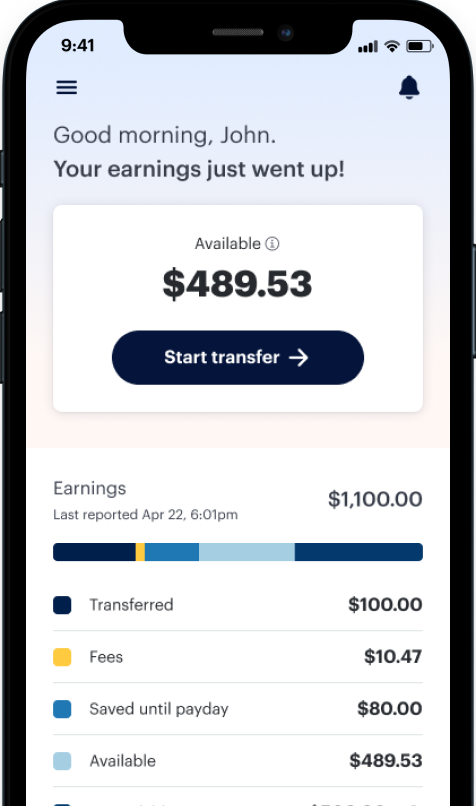Reducing personal debt is a crucial step toward achieving financial control and freedom. Although it seems daunting, it’s possible to reduce your debt and improve your financial wellness.
This step-by-step guide will provide you with practical strategies for assessing your debt, creating a repayment plan, and making lasting changes to your financial habits.
1. Assess your debt
The first step to reducing your personal debt is to list all your debts, including credit cards, personal loans, and any other outstanding balances. Note the interest rates and minimum payments for each debt. One good way to assess your personal debt is to request your credit report. Learn more about monitoring your credit here.
Some common sources of debt
- High-interest short term “Predatory” or “payday loans”: These loans are usually for a period of days or weeks and are expected to be paid back by the next paycheck. They can have unreasonably high interest rates.
- Overdraft fees: Although these aren’t loans, the fee for a small overdraft on a savings or checking account can be similar to a triple-digit interest rate, depending upon the amount and when it is repaid.
- Rent-to-own agreements: Retail stores commonly charge up to 100% interest for things like furniture and appliances if you purchase them through a rent-to-own agreement.
- Credit card debt: These commonly have interest rates between 20% and 30% plus fees, high late fees, and continuously accrue interest on the balances you carry. This can accumulate quickly and take a long time to repay.
- Medical debt: High healthcare costs, high deductibles, and lack of affordable health or dental insurance options can lead to significant medical bills.
These types of debt can result from a combination of low wages, irregular work hours, outdated pay cycles, lack of benefits, unexpected expenses, and lack of access to good forms of credit, or traditional banking services.
2. Identify any errors and contact creditors
After you’ve gone through your credit report and listed all your debts, it’s crucial you ensure everything is correct. If you find any errors, you can file a dispute directly with the credit reporting agencies (Experian, Equifax, and Transunion). This may get the debt removed from your credit report.
You can also ask for lower interest rates, re-amortization to lower your payments, or about hardship programs and repayment plans. Some merchants and creditors may be willing to work with you if it gives them a better chance of getting their money.
3. Create a debt repayment strategy
After you create a final list of the exact interest rates, minimum monthly payments, and total amounts, it’s time to create a repayment strategy. The best way to tackle debt is to utilize a repayment strategy that prioritizes high-interest payments.
Common repayment strategies for high-interest debt
- Debt avalanche method: List debts from highest to lowest interest rate and pay the minimum on all debts except the highest-interest one. Put extra money towards the highest-interest debt, and once the highest-interest debt is paid, move to the next highest. This helps to stop your debt from growing each month.
- Debt snowball method: List debts from smallest to largest balance and pay the minimum on all debts except the smallest. Put extra money towards the smallest debt, and once the smallest is paid off, move to the next smallest by carrying over the savings from the debt you just repaid.
- Debt snowflaking: Apply any extra, unexpected money (your raise, tax refunds, gifts, etc.) to debt.
- Debt consolidation: This involves combining multiple debts into a single loan or credit card with a lower interest rate. This simplifies your payments and lowers your overall cost. You generally need to work with a third party provider for this, and you may end-up paying a fee on top for their service.
- Balance transfer strategy: Transfer high-interest credit card balances to a card with 0% intro APR and pay off debt during the 0% interest period.
You can also combine elements of different strategies to find one that works for you, which is the most important aspect of creating a strategy.
4. Create a budget
Now that you have a strategy to pay your debts, you need to find the money to repay those debts. The first step is to track your income and expenses and identify areas where you can cut costs. Go through all your bank and credit card statements and cut everything that isn’t essential.
5. Avoid new debt
Use cash or debit cards for purchases until you’ve fully paid down your credit card debt. The key to avoiding new debt is to spend less than you earn. Create a realistic budget to track your income and expenses, helping you identify areas where you can save. This discipline allows you to build an emergency fund, so you can cover unexpected costs without needing to borrow. Try not to open any new lines of credit.
6. Explore additional sources of income
Consider a side-hustle, look for overtime opportunities, or consider picking up more shifts at your job. You can also consider selling any unused or unwanted items. The new gig economy makes it easy to identify opportunities for extra income.
7. Leverage free financial resources
Learn about personal finance through free online resources or consider meeting with a free financial counselor.
Online resources for managing and reducing debt
- National Foundation for Credit Counseling (NFCC): www.nfcc.org
- Annual Credit Report: www.annualcreditreport.com
- Consumer Financial Protection Bureau: www.consumerfinance.gov
- Take Charge America: www.takechargeamerica.org
- Credit Karma: www.creditkarma.com
Monitoring your credit and actively working to reduce debt are crucial steps in maintaining financial wellness.
Reducing debt frees up your income, lowers financial stress, and puts you on a path to long-term financial stability. By staying disciplined about your credit and managing your debt, you’re investing in your financial future and opening doors to greater financial freedom.

